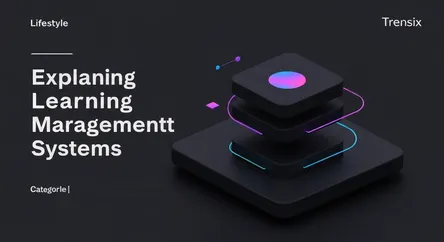Lifestyle
Explaining Learning Management Systems

Discover what a Learning Management System (LMS) is, why it's trending in education and business, and how this software impacts learning experiences.
What is it?
A Learning Management System (LMS) is a software application designed to administer, document, track, report, automate, and deliver educational courses or training programs. It acts as a central hub for all learning content and activities. Core features typically include tools for creating and managing course materials, enrolling students, tracking their progress, and assessing their performance through quizzes and assignments. Essentially, an LMS provides the framework that handles all aspects of the learning process, from hosting content to evaluating student outcomes, creating a virtual classroom environment for schools, universities, and corporate training departments.
Why is it trending?
The popularity of LMS platforms has surged due to the global shift towards remote work and online education. They offer unparalleled flexibility and accessibility, allowing learners to engage with content anytime, anywhere. For organizations, an LMS is a cost-effective and scalable solution for delivering consistent training to a geographically dispersed workforce or student body. The ability to centralize learning resources, automate administrative tasks, and gain data-driven insights into learner engagement makes it an indispensable tool for modern education and corporate development, driving efficiency and improving learning outcomes.
How does it affect people?
For learners, an LMS provides a structured and often personalized learning experience. It gives them on-demand access to course materials, interactive forums, and self-assessment tools, empowering them to take control of their educational journey. For instructors and administrators, an LMS simplifies the complex logistics of course management. It automates grading, tracks completion rates, and generates detailed reports, freeing up valuable time to focus on teaching and content improvement. This technology bridges physical distances, making quality education and professional development more accessible and manageable for everyone involved.